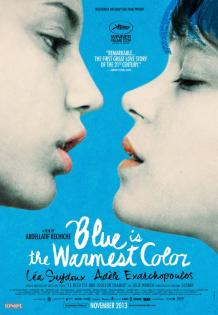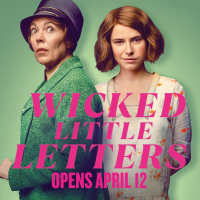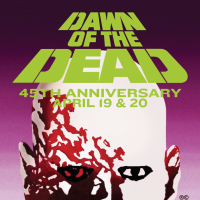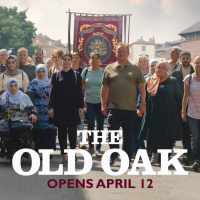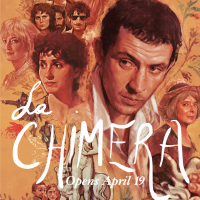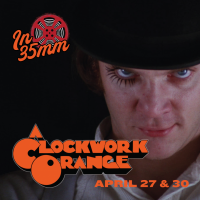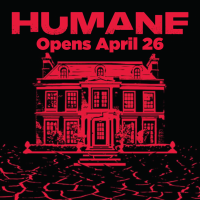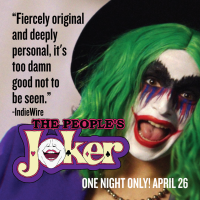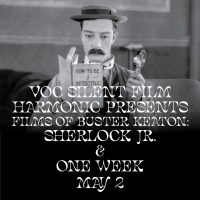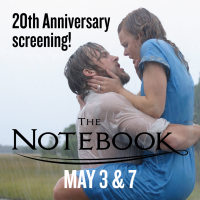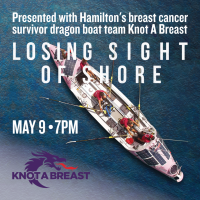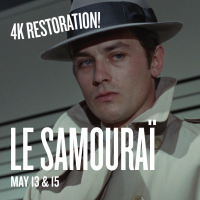Young love is a familiar movie subject, but "Blue Is the Warmest Color" is something rare. It captures the urgency and ease of first love, its romanticism, its physicality, its desperation, its ecstasy, its complete unbounded giving - and something else, too: the way the memory of first love can linger into later life, the poignancy of that, and the pain.
You may have heard lots of things about this film, but the most important thing to know is that "Blue Is the Warmest Color" is a masterpiece, the first of 2013, and the most emotionally moving film to come along in years.
It arrives from France on a wave of controversy for its depictions of lesbian sex between the two young women, played by Lea Seydoux and Adele Exarchopoulos. The scenes, which are explicit and protracted, earned the film an NC-17 rating, and it would be disingenuous to claim they're not erotic. On the contrary, if you don't find these scenes erotic, you've probably been dead for at least a week. But unlike in a film of pornography, the sex is simulated (as in no actual genital contact), and the overall point is not to arouse. I doubt anyone walks out of "Blue Is the Warmest Color" feeling they've seen a sex movie. When it won the Palme d'Or at Cannes, Steven Spielberg, hardly a radical, was president of the jury.
The film is 179 minutes long and needs all 179 minutes. From the beginning, it settles into a rhythm that makes sense of its length and gives the viewer a deep sense of place. We meet Adele (Exarchopoulos) in high school, and unlike the usual bland teenage protagonist, she is already vivid - lively and confident, with a touch of insolence, an arresting low voice and an epicurean response to food. In group scenes, director Abdellatif Kechiche just leaves the camera on Exarchopoulos.
Though Seydoux, a major star in France, gets top billing, it's Exarchopoulos, previously unknown, who is the movie's focus. In close-up, we see an actress whose thoughts and moods are always shifting and revealing themselves, who is interesting in every frame. When the character is a teenager, Exarchopoulos thinks teenage thoughts. When the character grows into her mid-20s, Exarchopoulos (18 at the time of filming) evokes the aura and sensibility of a responsible adult woman. Without doubt, this is Western cinema's most mature and assured performance by a teenage actress since Sandrine Bonnaire's award-winning work in "A Nos Amours" and "Vagabond" 30 years ago.
When Adele first sees Emma, who is about five or six years older and has blue hair, it's love at first sight, and it registers on Exarchopoulos' face in the way it does in real life - like a kick in the stomach, like a forced recognition of one's own incompleteness. Emma (Seydoux) is an art student, from an artsy upper-middle-class family, while Adele is lower-middle-class - class will become an issue as the film wears on. Seydoux conveys the mind of an artist, and in all the ways the world measures it, Emma is the more extraordinary person. But Kechiche shows us Adele's soul, so that we know she's extraordinary, too, if only in her ability to feel and to give of herself.
The attraction is intense, and the bedroom scenes show where it all leads. Some might argue that Kechiche depicts too much of the sex. This is quite possibly true, and yet a great film is a delicate alchemy, and I would not tamper with it. Certainly, the memory of the intimacy informs how we watch the rest of the film, lending it an extra depth of feeling that might not have been there. Their intimacy is not only something they've been through - we've gone through it with them - and in the end, it's the nakedness and abandon of the emotions, not the sex, that stays with us days later.
Finally, though "Blue Is the Warmest Color" is a film about lesbian lovers, nothing in Kechiche's treatment of the subject suggests the Other. Rather, it is very much a film about young love that just happens to be about two women, and any man or woman will know what that means and what that feels like and will connect with Adele's experience. Whether that's good or less good or useful, others can sort out - that's outside the realm of criticism.
But make no mistake, "Blue Is the Warmest Color" constitutes a breakthrough, in addition to being the best film of 2013.

